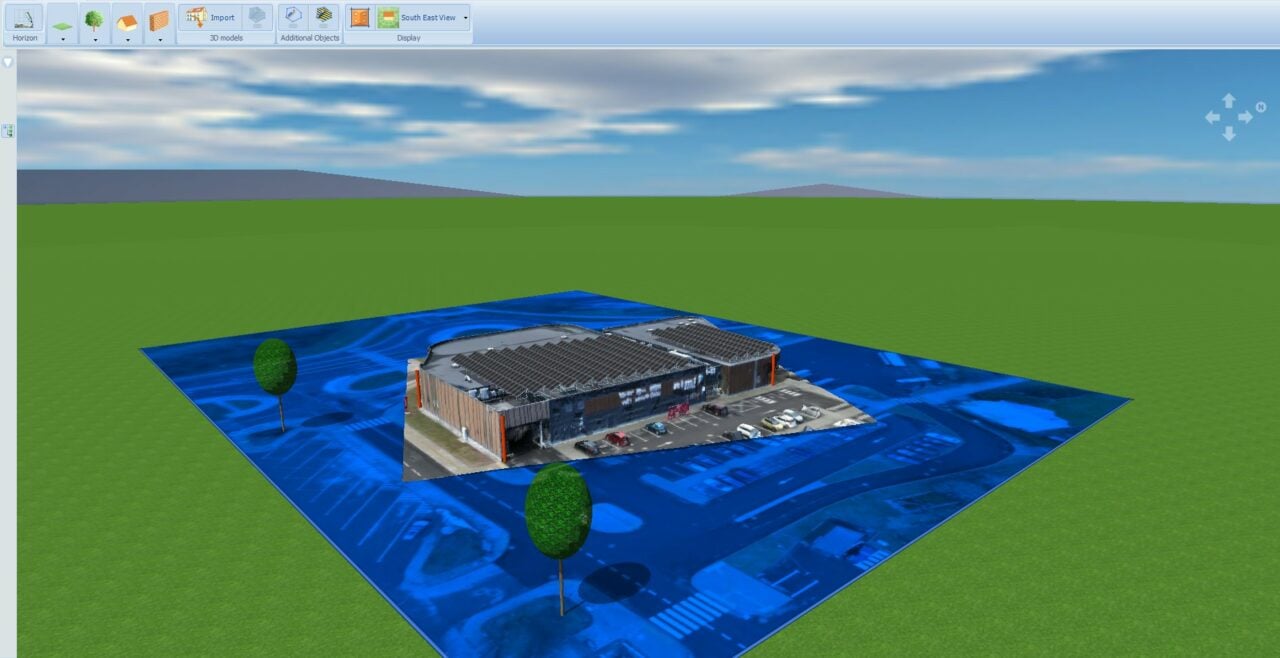
An example rendering from a UAV. Image: The Solar Design Company.
The Solar Design Company has said that unmanned aerial vehicles (UAVs) are “leading the way” for accurate solar PV surveys.
UAV surveys can be used to provide information about installing on-roof solar PV arrays. With interest growing in the use of the technology, this could be an area that is explored further to optimise installations.
According to the solar software company, with careful cross-checks for accurate measurements, the firm believes UAVs will “predominate over the current reliance of generic on-line images which are so often stitched together with significant pixilation and parallax errors”. The UAVs are equipped with a 4k resolution camera.
Christopher Laughton, managing director of the Solar Design Company believes that the technology could well become a key method in the successful designing of rooftop solar PV.
“With careful cross-checks for accurate measurements, we believe this method will predominate over the current reliance of generic on-line images which are so often stitched together with significant pixilation and parallax errors,” said Laughton on how UAVs can be used for solar.
“The use of 3D simulation models is not simply about the improved inter-row shading analysis but also about presenting complex scenarios to end customers. This along with analysing customer’s half-hourly consumption data leads to the best predictions of the site’s energy balance and ultimately return on investment. UAV remote camera inspection also has its place for ongoing inspection and maintenance of large PV arrays once a system is fitted.”
He added: “Hand-in-hand with the progress of the hardware, the processing of data is now often done in the ‘clouds’ on remote servers allowing local processors to get on with other tasks. Having the choice of local or remote processing is another key advance since there are often a little of images to process into one single 3D object.”
Smaller UAVs had been explored by Octopus Energy Generation in a trial announced in September 2022.
Tests had been led by aerial data and solar software provider Above, who, alongside technology partner HeroTech8, utilised a remotely operated drone to carry out routine inspections more frequently at a solar farm.

